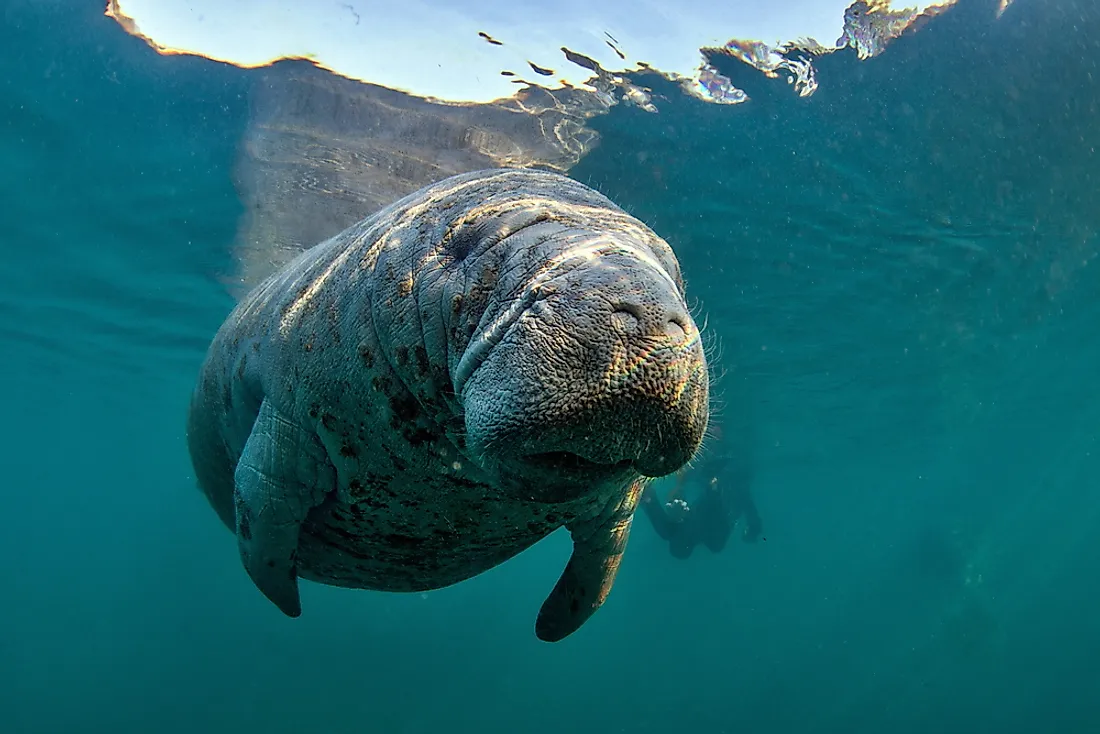10 Animals Found In Haiti

Haiti is a country in the Caribbean that is located on the island of Hispaniola, which it shares with the Dominican Republic. While the country's terrain is varied, Haiti experiences a primarily tropical climate, and is inhabited by for several wildlife species, some of which are native to the island. The dense jungles are home to terrestrial animals such as insects, birds, snakes, and bats, while the surrounding waters are a haven for marine life. However, deforestation, rising sea levels, and erosion are a concern for the country's wildlife. Between the 17th and 19th centuries, French colonists cleared vast tracts of forest land for sugarcane plantation, while a population explosion during the 20th century resulted in further deforestation. Examples of the animals that inhabit Haiti are listed below.
Hispaniola Solenodon
The solenodon is a small, venomous, nocturnal, burrowing mammal that resembles a shrew. The rodent is native to Cuba and Hispaniola, and is only found on the two islands. The solenodon, which was first documented in 1833 in the undisturbed forest of southern Haiti, is an elusive and squeaky animal that is difficult to spot, especially during the daytime. Unfortunately, it is critically endangered, and very few sightings have been recorded over the past decade.
Hispaniolan Hutia
The Hispaniolan hutia is a large rodent that resembles a capybara or guinea pig. The animal spends time in rock crevices and trees in order to avoid predators, and as herbivorous rodents they are also occasionally found near fruit and nut trees. They are hunted for food in Cuba, where they are cooked in pots with honey and nuts. A thriving Hispaniolan hutia population exists in Guantanamo Bay due to an abundance of food and a shortage of predators. The hutia has earned the nickname "banana rats" not because the banana is the species' favorite food, but because its fecal excrement is banana-shaped.
West Indian Manatee
The West Indian manatee is one of the many forms of marine wildlife in Haiti. The mammal, which is the largest of the manatee family, previously had a conservation status of "endangered", but has since been downgraded to "threatened". The West Indian manatee inhabits the waters of the Caribbean, as well as parts of South America, Central America, and Florida.
Greater Bulldog Bat
The greater bulldog bat is distributed throughout South America and the Caribbean, and is one of the few bat species that eat fish. The bat employs echolocation to detect small water ripples and uses a pouch on its leg to scoop fish from the water. Its diet also includes shrimp and crabs. Haiti was a haven for the greater bulldog bat, but years of deforestation and habitat destruction have left the mammal threatened.
Grey-crowned Palm-tanager
The grey-crowned palm-tanager is a threatened bird species that inhabits the 10 Important Bird Areas (IBA) of Haiti. The species was previously limited to Haiti, but a small number of birds have since migrated to the Dominican Republic. The destruction of natural forests is an immediate threat to the grey-crowned palm-tanager.
Candy Cane Snail
The candy cane snail is native to the island of Hispaniola and its range is limited to Haiti and the Dominican Republic. The species is a land snail that cannot survive underwater, and only lives in the Haematoxylum campechianum tree. The candy cane snail has a beautiful, striped, multi-colored shell, which makes the snail desirable for collection and sale, although the practice is unlawful.
American Crocodile
The American crocodile is distinct from the American alligator, which is common in the US state of Florida. Although the crocodile also lives in southern Florida, large populations exist throughout Latin America, especially on the island of Hispaniola. It is a formidable predator that challenges the alligator and other crocodile species in terms of size. The American crocodile was considered threatened in North and Central America during the 1980s, but its population has since recovered.
Hispaniolan Ventriloquial Frog
The Hispaniolan ventriloquial frog is native to the cloud forests of Massif de la Hotte, Haiti. Additionally, the entire global population is limited to Pic Macaya National Park. Deforestation and habitat destruction are a significant threat to the frog, but it is yet to attract the attention of conservationists.
Hispaniolan Brown Racer
There are approximately 27 species of snakes in Haiti, but none is poisonous enough to fatally endanger humans. Contact between the snake and humans occurs frequently, and it is common to find snake charmers performing in cities. The Hispaniolan brown racer is the most common snake on the island of Hispaniola.
Hispaniolan Trogon
The Hispaniolan trogon bird is the national bird of Haiti and is native to Hispaniola. The bird nearly became extinct after years of hunting and habitat destruction, but conservation efforts in the late 20th and early 21st centuries helped to restore its wild population. However, forest degradation remains an immediate threat to the Hispaniolan trogon bird.











